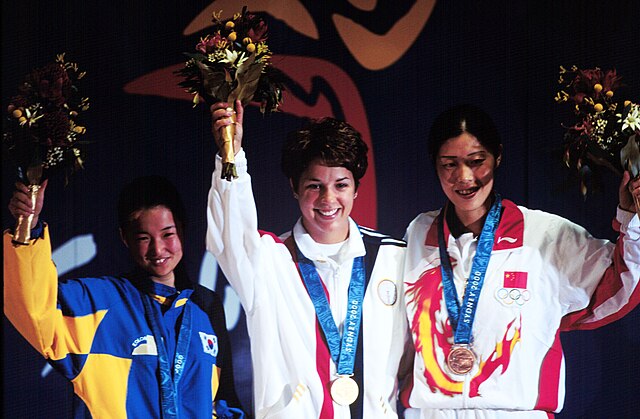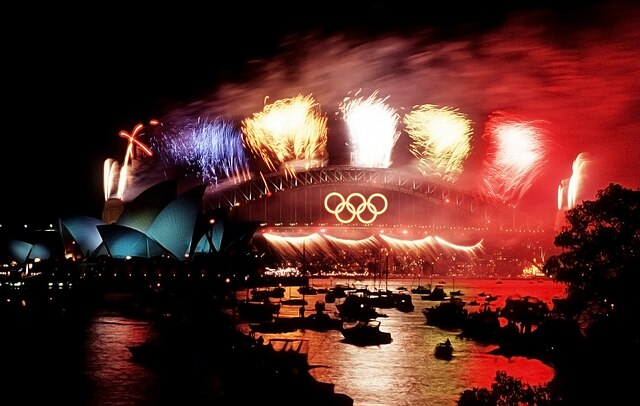Top Qs
Timeline
Chat
Perspective
2000 Summer Olympics medal table
From Wikipedia, the free encyclopedia
Remove ads
The 2000 Summer Olympics, officially known as the Games of the XXVII Olympiad, were a summer multi-sport event held in Sydney, New South Wales, Australia, from 15 September to 1 October 2000.[1] A total of 10,651 athletes from 199 nations represented by National Olympic Committees (NOCs) (with four individual athletes from East Timor because the country had no NOC),[2][3] including the Olympic debuts of Eritrea, Micronesia and Palau.[3] The games featured 300 events in 28 sports across 39 disciplines,[2][4] including the debuts of synchronized diving, taekowndo, triathlon, trampolining, women's modern pentathlon and women's weightlifting as official Olympic medal events.[1][2][5]


Athletes from 80 countries won at least one medal, a new record,[6] with 52 nations winning at least one gold medal.[7] The United States won the most gold medals, with 37, and the most medals overall, with 93.[7] It was the second consecutive Summer Olympic Games that the United States led the medal count in both gold and overall medals.[8] Host nation Australia finished the Games with 58 medals overall (16 gold, 25 silver, and 17 bronze).[9] Cameroon,[10] Colombia,[11] Latvia,[12] Mozambique[13] and Slovenia won a gold medal for the first time in their Olympic histories,[14] while Vietnam,[15] Barbados,[16] Macedonia,[17] Kuwait,[18] Kyrgyzstan,[19] and Saudi Arabia won their first ever Olympic medals.[20] Among individual athletes, Australia's Ian Thorpe, the Netherlands' Leontien van Moorsel and Inge de Bruijn and the United States' Jenny Thompson and Lenny Krayzelburg won the most gold medals at the games with three each and Russian tympanist Alexei Nemov won the most overall medals with six (two gold, one silver and three bronze).[21]
Remove ads
Medal table
Summarize
Perspective
The medal table is based on information provided by the International Olympic Committee (IOC) and is consistent with IOC conventional sorting in its published medal tables.[2] The table uses the Olympic medal table sorting method. By default, the table is ordered by the number of gold medals the athletes from a nation have won, where a nation is an entity represented by a NOC. The number of silver medals is taken into consideration next and then the number of bronze medals.[22][23] If teams are still tied, equal ranking is given and they are listed alphabetically by their IOC country code.[24]
Events in boxing result in a bronze medal being awarded to each of the two competitors who lose their semi-final matches, as opposed to fighting in a third place tie breaker.[25] Another combat sport, judo, uses a repechage system which also results in two bronze medals being awarded.[26]
There were two ties for medals in athletics. No gold medal and two silver medals were awarded due to second-place ties in the women's 100 metres while a tie for third place in the women's high jump saw two bronze medals being awarded.[27][28] In swimming events, there were two more ties for medals. There was a two-way tie for first place in the men's 50 metre freestyle, which resulted in two gold medals and no silver medals being awarded.[29] Two bronze medals were awarded in the women's 100 metre freestyle due to a tie for third place.[30]
- Key
‡ Changes in medal standings (see below)
* Host nation (Australia)
Remove ads
Changes in medal standings
Remove ads
See also
Notes
References
External links
Wikiwand - on
Seamless Wikipedia browsing. On steroids.
Remove ads
